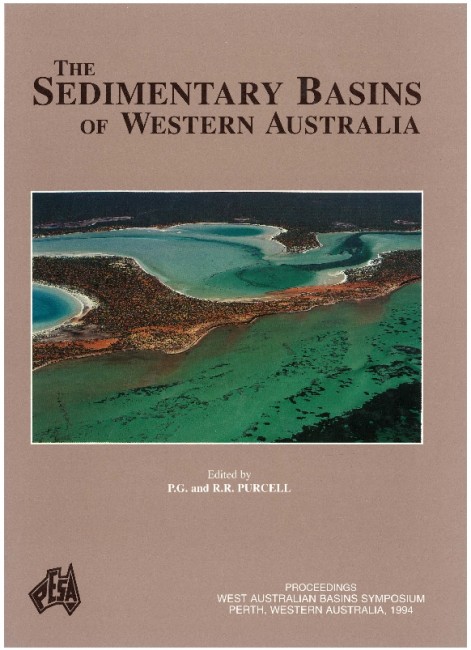Publication Name: The Sedimentary Basins of WA
Authors: K.K. Romine, P.N. Southgate, J.M. Kennard and M.J. Jackson
Publication Volume: 1
Date Published: July 1994
Number of Pages: 35
Reference Type: Book Section
Abstract:
A chronostratigraphic framework has been constructed for the Ordovician- Silurian phase of the Canning Basin. This integrated tectonic- and sequence-stratigraphic analysis provides an understanding of the shapes of the sub-basins and the effects of accommodation history on the depositional patterns observed within this first-order megasequence. Extension in the Early Ordovician (Tremadocian) initiated a period of rapid subsidence and a series of northwest-trending half-graben formed between the Pilbara and Kimberley Blocks. Along the southern and northern flanks of the basin normal faults with major Tremadocian-Llanvirnian growth form the northernboundaries of deep half graben. Elsewhere, normal faults with relatively minor growth in Tremadocian-Arenigian
time form the northern margins of comparatively shallow half-graben depocentres that locally dissect the gently
inclined ramps and platforms. Relay ramps developed as zones of displacement-transfer, linking discrete fault
segments within fault zones and, at a larger scale, entire fault zones. In the Willara Sub-basin these structures
may have provided fairways for fluid migration, enabling metal-bearing brines and hydrocarbons to reach reservoir rocks.
Five second-order supersequences and a number of associated third-order sequences are recognised in the
Ordovician-Silurian Megasequence. Significant differences exist between the previous lithostratigraphic
subdivision and this sequence stratigraphic subdivision. The identification, correlation and mapping of significant stratal surfaces (sequence boundaries and maximum flooding surfaces) enables many previously unrelated but significant lithostratigraphic observations to be placed in an integrated and predictive chronostratigraphic framework. Horizons of enhanced porosity in the Willara and Nita formations underlie regional surfaces of subaerial exposure (sequence boundaries). The basinward shift in facies associated with the lower of these two sequence boundaries resulted in coastal progradation and the deposition of a possible reservoir sand facies in the basin. Intervals of significant organic-rich rock deposits are shown to coincide with the maximum flooding surfaces of second-order supersequences and third-order sequences. At the first-order scale the highest TOC values occur in the Goldwyer Formation where they are associated with the time of maximum transgression in the Ordovician-Silurian Megasequence. Lowstand saltern deposits of the Mallowa Salt accumulated in broad depressions that extended across the Canning Basin. Several stages of regional salt dissolution have affected the Mallowa Salt, and its present distribution is a combination of primary depositional patterns and secondary dissolution. Periods of regional salt dissolution coincided with the initiation of new basin phases, tilting and erosion. These events may have created basinal-brine circulatory systems that scavenged metals. A major unconformity of Siluro-Devonian age (Rodingan/Prices Creek Movement) terminated the Ordovician-Silurian basin phase.


